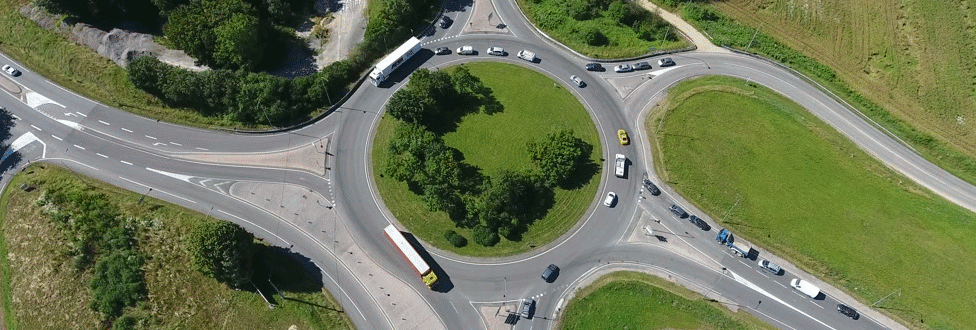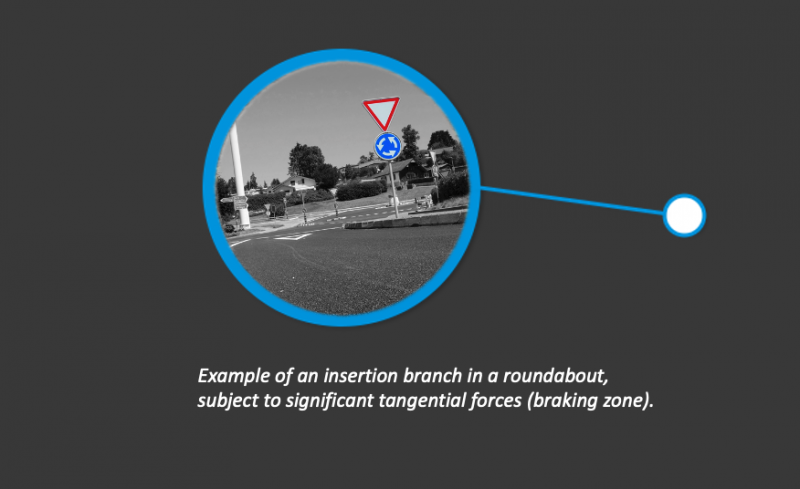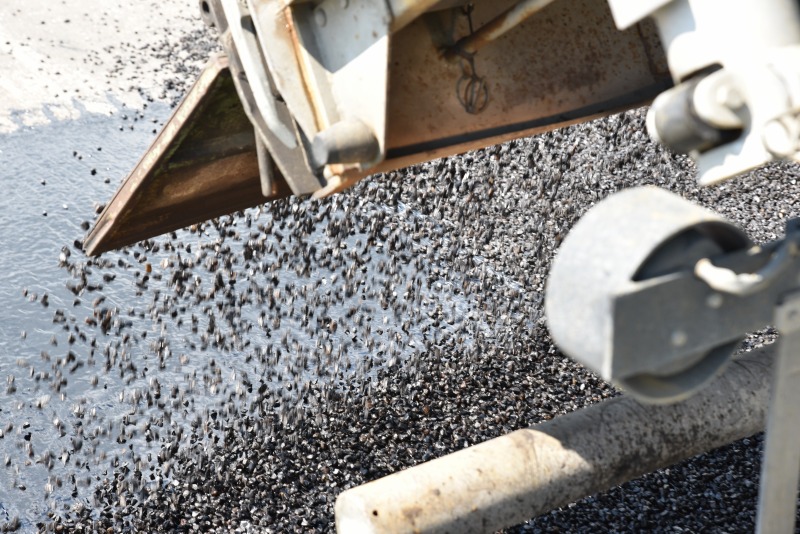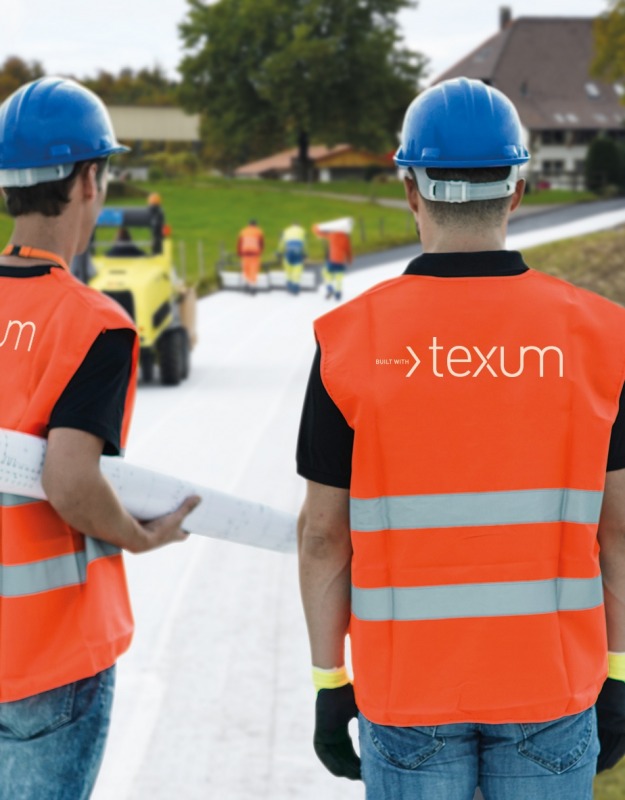Roundabouts
Dimensioning and loads specific to these bushings


Issues and consequences
The management of traffic circles, being traffic hubs by definition, remains a complex issue.
The specific constraints applied, the difficulty of maintaining them and the often complex phasing of work are all factors to be taken into account in a reinforcement project.Specific loads in service
High traffic density and circular geometry are at the heart of traffic circles.
Present on roadways sometimes designed for the heaviest classes of traffic, these strategic locations are both acceleration/braking zones and turning zones, making them particularly tricky to maintain.The geometry of traffic circles, combined with the speed at which they are used, means that they are subject to their own specific constraints.
- Shear stresses
Access roads are areas of braking and acceleration, resulting in axle-to-axle load transfers and high grip requirements.
On the annular pavement of roundabouts, increased stresses are caused by the rotational forces of vehicle axles on the pavement. This results in a significant increase in tangential shear stresses.
Added to this are the tangential forces resulting from centrifugal force, causing fatigue phenomena within the bituminous structure.
- Structural constraints
What's more, the extremely channelled traffic due to the particular conditions of the roadway geometry also adds to the constraints.
The effect of centrifugal force resulting directly from the bend unbalances the distribution of loads between the wheels on the same axle, causing the wheels outside the bend to be overloaded (+20 to 60%).Tangential forces: a source of fatigue
Repeatedly applied tangential forces due to mass transfer and the resultant centrifugal force exerted on turning vehicles lead to fatigue fracture of bitumen bonding layers (emulsions).
This phenomenon quickly leads to uncoupling of the asphalt layers, resulting in structural failure.In addition to the shearing effect of the quasi-static pivoting of heavy vehicle wheels, tangential forces resulting from centrifugal forces also repeatedly stress the road surface.
This type of load is found mainly on roundabouts and short-radius bends. Heavy goods vehicles - the main contributors to road wear and tear - are particularly subject to these loads, due to their weight and associated geometry.
Their height, as well as the height at which the load they contain is placed (in addition to their unladen weight), considerably increases mass transfers to the outside wheels.These stresses, applied repeatedly as each truck passes over a pavement of this type, cause the asphalt layers to detach by fatigue, resulting in rutting and/or ravelling and leaving room for the associated cracking.

Need to maintain traffic flow during work
Traffic circles require special operating conditions due to the duration of the work.
Maintaining traffic flow (which is often a prerequisite for refurbishing these rings) requires an optimized and perfectly controlled pace to limit the inconvenience caused.When a roundabout is to be rehabilitated, the absence of a detour option may mean that traffic has to be kept moving during the work.
As a result, the project is divided into phases and completed in a short timeframe to minimize disruption to users.
This imposed phasing represents a major risk of discontinuity in the structure, and is consequently a source of additional stress (differential settlement, opening of joints, etc.).
The high traffic density within these structures is a point to be anticipated in the management of a traffic circle reinforcement operation: minimizing the duration of work remains an essential point in the smooth running of a worksite in these busy areas.
TEXUM expertise
Texum has developed a reinforcement solution specially designed for this type of roadway, taking into account all the parameters involved in repairing (or creating) a traffic circle, from technical specifications to implementation.
This solution consists of a SAMI membrane reinforced with a quadriaxial carbon fiber geogrid.
Texgrid® CV 150 GIRO solution
 Swiss reinforcement company
Swiss reinforcement company